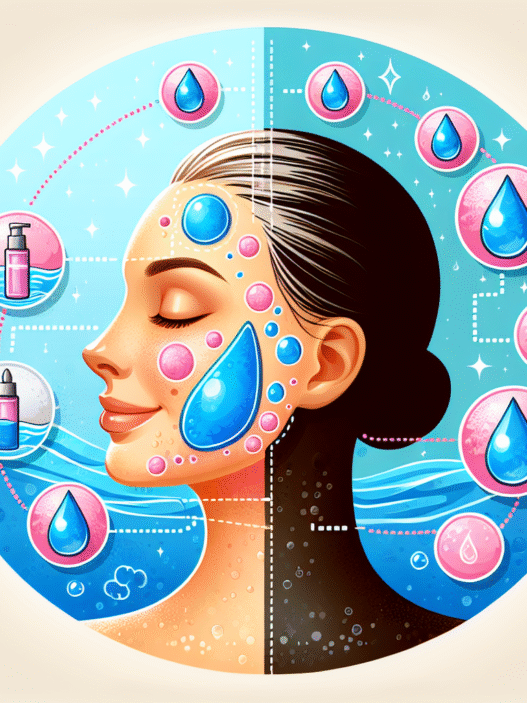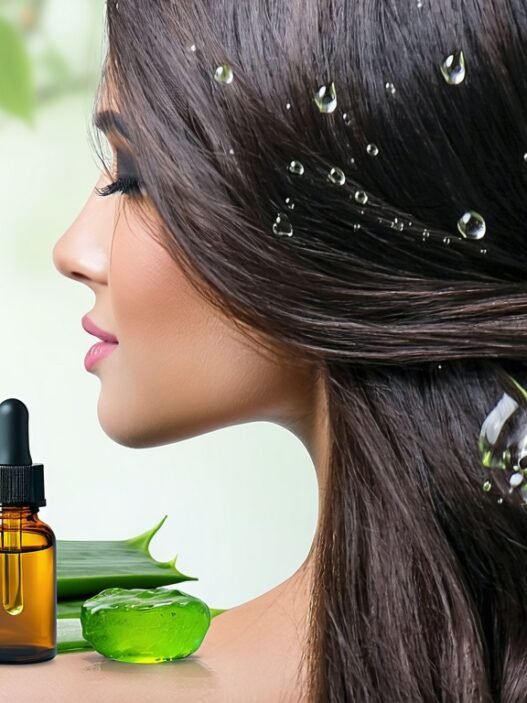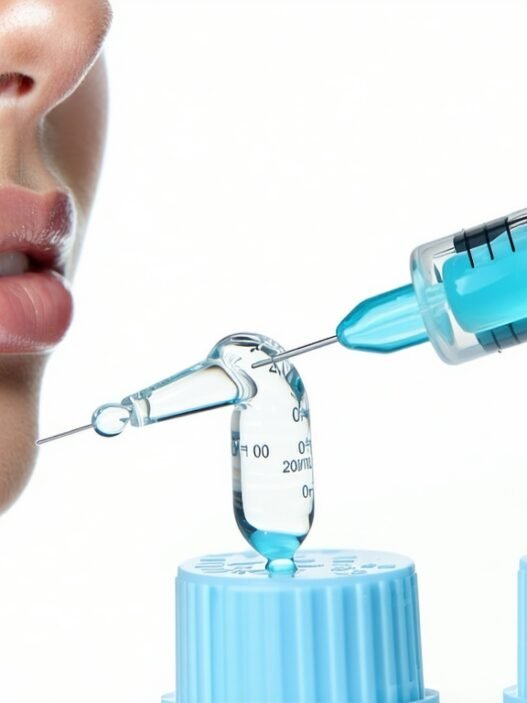Understanding Hyaluronic Acid
Role in Skin Health
Hyaluronic acid (HA) plays a crucial role in skin health. It is a naturally occurring substance found in various parts of the human body, including the skin, eyes, and synovial fluid. As individuals age, their bodies produce less hyaluronic acid, contributing to a decrease in volume, hydration, and plumpness of the skin. HA is essential because it provides structure to the skin, helping to maintain its elasticity and firmness.
In skincare, hyaluronic acid is recognized as a powerful humectant. It has the remarkable ability to bind over a thousand times its weight in water, which makes it effective in retaining moisture (Healthline). This property is vital for maintaining skin hydration and reducing the appearance of wrinkles.
| Age Group | Average Hyaluronic Acid Level (mg/ml) |
|---|---|
| Young Adults | 6-7 |
| Adults | 4-5 |
| Seniors | 1-2 |
Importance of Hydration
Hydration is essential for healthy skin, and hyaluronic acid plays a key role in this process. By attracting and retaining moisture, HA helps to keep the skin hydrated, preventing dryness and minimizing transepidermal water loss (TEWL) (Healthline). This long-lasting moisture retention helps to create a youthful, plump appearance.
When the skin is adequately hydrated, it is less prone to sagging and wrinkles, which are common signs of aging. Moreover, maintaining optimal hydration levels promotes faster skin healing and recovery from injuries or blemishes, enhancing overall skin health and resilience.
For those curious about how hyaluronic acid interacts with other skincare ingredients, consider reading about what do vitamin C and hyaluronic acid do?. Proper hydration through the use of hyaluronic acid can lead to visible improvements in skin texture and tone, making it a favorite ingredient among dermatologists and skincare enthusiasts alike.
Benefits of Hyaluronic Acid
Hyaluronic acid offers a multitude of advantages for skin health, making it a highly favored ingredient among beauty and skincare enthusiasts. The following sections outline its notable benefits.
Skin Moisturization
One of the primary benefits of hyaluronic acid is its exceptional ability to hydrate the skin. This compound has the ability to bind up to 1,000 times its weight in water, effectively maintaining moisture levels and preventing transepidermal water loss (TEWL). By functioning as a humectant, it keeps water molecules close to the skin’s surface, resulting in a plump and hydrated appearance.
Individuals incorporating hyaluronic acid into their skincare routines often notice improvements in skin texture and a decrease in the visibility of wrinkles. For optimal hydration, it is advised to choose products with molecular weights of around 130 kDa, as they have been shown to maximize skin moisturization.
| Hydration Benefits | Description |
|---|---|
| Water Binding Capacity | Up to 1,000 times its weight |
| Reduces TEWL | Slows down water evaporation from the skin |
| Enhances Skin Texture | Improves overall moisture levels |
Improving Skin Elasticity
Hyaluronic acid also plays a significant role in enhancing skin elasticity. Studies have demonstrated that using hyaluronic acid with a molecular weight of approximately 130 kDa can boost skin elasticity by up to 20% after just one month of use (Healthline). This increase in elasticity contributes to a more youthful appearance, as it helps skin resist sagging and minimizes the appearance of fine lines.
Long-term use of hyaluronic acid not only aids in maintaining skin flexibility but also contributes to overall skin health. Regularly using products infused with this ingredient can yield noticeable improvements in skin firmness over time.
| Elasticity Benefits | Impact |
|---|---|
| Increases Elasticity | Up to 20% improvement in one month |
| Supports Youthful Appearance | Minimizes sagging and fine lines |
| Long-term Health | Enhances overall skin firmness |
Wound Healing Properties
In addition to its moisturizing and elasticizing benefits, hyaluronic acid is known for its wound healing capabilities. The presence of hyaluronic acid in the skin aids in the healing process by promoting tissue repair and regeneration Cleveland Clinic. It has been shown to enhance the healing of different types of wounds, making it a valuable addition to skincare products used for repair and recovery.
To maximize the benefits of hyaluronic acid, consider incorporating it into both topical applications and as part of your overall skincare regimen. For more information on what hyaluronic acid can do for your skin, check out our detailed article on what does hyaluronic acid do to your skin?.
| Wound Healing Benefits | Details |
|---|---|
| Promotes Tissue Repair | Supports regeneration of skin |
| Accelerates Healing Process | Enhances recovery from wounds |
| Improves Skin Resilience | Strengthens skin barrier function |
Types of Hyaluronic Acid Products
Hyaluronic acid (HA) is utilized in various forms to enhance skin health and address anti-aging concerns. Understanding the different products available can help beauty and skincare enthusiasts make informed choices.
Topical Applications
Topical hyaluronic acid is one of the most common forms of application. A 2021 study demonstrated that applying HA twice a day not only improved skin hydration but also led to visible improvements in skin appearance for women aged 30 to 65 with signs of photoaging after six weeks (Medical News Today). Many dermatologists recommend its use after facial or postsurgical rejuvenation procedures, citing its effectiveness and tolerability.
| Product Type | Benefits |
|---|---|
| Serums | Deep hydration and nourishment |
| Creams | Locks in moisture for prolonged hydration |
| Gels | Lightweight and absorbs quickly |
Oral Supplements
Oral supplements containing hyaluronic acid present an alternative way to incorporate this beneficial compound into the routine. These supplements may help enhance skin hydration from within and potentially support joint health by maintaining synovial fluid levels. While more research is needed to determine their efficacy, initial studies indicate they might provide some degree of benefit, especially for skin hydration.
| Supplement Type | Benefits |
|---|---|
| Capsules | Convenient daily dosage |
| Powders | Mix with beverages for easy ingestion |
Injectable Fillers
Injectable fillers that contain hyaluronic acid are approved for cosmetic enhancements and some medical applications. These fillers can address cosmetic concerns such as lifting cheeks, softening deep folds, improving the appearance of under-eye circles, and hydrating lips (Harvard Health Publishing).
Hyaluronic acid injections are also FDA-approved for relieving knee pain in individuals with mild to moderate osteoarthritis, although local swelling and pain might occur for a few days afterward (Medical News Today). Both dermatologists and patients find them effective options for combating signs of aging and achieving hydration.
| Injectable Type | Benefits |
|---|---|
| HA Fillers | Instant volume and hydration, addressing wrinkles and folds |
| HA Injections | Relieves pain and improves knee function |
When considering hyaluronic acid options, it is important to consult with a dermatologist to determine the best product based on individual skin needs and concerns. For those interested in combining hyaluronic acid with other skincare ingredients, you may want to explore our articles on what do vitamin c and hyaluronic acid do? and what not to mix with hyaluronic acid?.
Dermatologist Recommendations
Hyaluronic acid (HA) is widely recommended by dermatologists for its various benefits in skincare. This section will delve into the recommended applications of HA in both topical and injectable forms.
Topical Use
Topical hyaluronic acid products are praised for their hydrating properties. According to dermatologists, these products serve as effective moisturizers and are generally well tolerated by all skin types, including sensitive skin. They are also considered safe for use during pregnancy and breastfeeding (Harvard Health Publishing).
The effectiveness of topical HA depends on its molecular size. Larger molecules remain on the skin’s surface, providing hydration, while smaller molecules can penetrate deeper into the epidermis for more substantial hydration. The ideal concentration for HA in topical products is between 1-2% to avoid any issues with water retention from deeper skin layers (Dr. Davin Lim).
| Property | Larger HA Molecules | Smaller HA Molecules |
|---|---|---|
| Surface Hydration | Yes | Minimal |
| Deep Penetration | No | Yes |
| Recommended Use | Moisturizer | Intensive hydrating treatments |
Injectable Fillers Comparison
For individuals experiencing volume loss and skin laxity due to aging, dermatologists often prefer injectable HA fillers over topical applications. These fillers deliver HA directly into the deeper dermal layers, yielding more significant and visible results than topical products.
Injectable fillers are particularly effective because they not only hydrate the skin but can also improve elasticity and structure, making the skin appear fuller and more youthful. The results from these filled areas last longer than those obtained from surface-level moisturizing with creams or serums.
| Feature | Injectable Fillers | Topical Applications |
|---|---|---|
| Depth of Penetration | Deep (dermal layers) | Superficial (skin surface) |
| Results Duration | Longer-lasting | Short-term hydration |
| Recommended for | Volume loss, wrinkles | Daily hydration |
Combination therapies incorporating both retinoids and hyaluronic acid are also favored by dermatologists. Using retinoids enhances cell regeneration and collagen production while minimizing retinoid-induced dryness through the moisturizing effects of HA.
To explore more about the impacts of hyaluronic acid on the skin, check our article on what does hyaluronic acid do to your skin?.
Safety and Side Effects
With its growing popularity in skincare, hyaluronic acid is often asked about in the context of safety and side effects. Understanding its proper usage and potential adverse reactions is vital for beauty and skincare enthusiasts.
Proper Usage Guidelines
Hyaluronic acid products are considered safe when used as directed. It is essential to follow the manufacturer’s instructions and consult with a healthcare provider when using prescription products. Over-the-counter hyaluronic acid is available in various forms, including serums, creams, lotions, and eye care products. These products are generally well-tolerated, even for those with sensitive skin (Cleveland Clinic).
| Product Type | Recommended Use |
|---|---|
| Topical | Apply on clean skin, typically twice daily. |
| Injectable | Only administered by licensed medical professionals. |
| Oral | Follow dosage recommendations on the supplement label. |
Hyaluronic acid is safe for use during pregnancy and breastfeeding, especially in topical formats (Harvard Health Publishing). However, further research is necessary to fully understand its effects on pregnant and lactating individuals or children.
Possible Adverse Reactions
While hyaluronic acid is generally safe, some individuals may experience side effects. Topical hyaluronic acid is usually well tolerated, but those opting for injectable forms might encounter swelling, redness, or pain near the injection site. These symptoms typically resolve within a week (Medical News Today).
Possible side effects associated with the use of hyaluronic acid might include:
| Type of Reaction | Description |
|---|---|
| Topical Irritation | Mild redness or discomfort may occur but typically fades quickly. |
| Injection site reactions | Swelling, redness, pain; generally resolves within a week. |
| Allergic Reactions (rare) | In rare cases, some individuals may have an allergic reaction. |
For more specific reactions, readers can review related topics, such as what happens if you use too much hyaluronic acid on your face? and what are the disadvantages of hyaluronic?. Always ensure proper consultation and follow guidelines to enjoy the benefits while minimizing risks with this popular skincare ingredient.
Future of Hyaluronic Acid
Ongoing Research
Hyaluronic acid is a versatile molecule with multiple beneficial uses, including skin, joint, and eye health. Ongoing scientific studies worldwide are exploring new applications for this remarkable compound. Research is currently investigating its potential role in areas beyond dermatology, such as reproduction and tissue development.
One of the key benefits of hyaluronic acid is its ability to increase moisture levels in the skin, reduce the appearance of wrinkles, and improve wound healing. The structure of hyaluronic acid allows it to act as a scaffold for tissue growth, which is essential for effective wound healing.
| Research Focus | Potential Benefits |
|---|---|
| Reproduction and Development | Possible contributions to tissue growth and regeneration |
| Wound Healing | Improved healing through enhanced moisture retention and scaffold structure |
| Joint Health | Possible reduction in joints’ pain and improvement in mobility |
New Applications
The future of hyaluronic acid in skincare and medical treatments seems promising, as new formulations and delivery methods are being developed. This includes exploring long-term use of hyaluronic acid serums and supplements, which have shown to enhance overall skin health, flexibility, and elasticity (Cleveland Clinic).
Current trends in hyaluronic acid products are focusing on optimizing its effectiveness in various applications. For example, innovations in topical formulations are enhancing absorption rates, while injectable variants are becoming popular in cosmetic treatments to combat aging.
As researchers continue to uncover more benefits and potential uses, hyaluronic acid remains a focal point in both dermatology and general health care. For instance, exploring its benefits for joint health may lead to new treatments that provide relief from arthritis and other joint-related conditions.
With ongoing developments and research, hyaluronic acid is expected to solidify its status as a key ingredient in health and beauty products. Enthusiasts are encouraged to stay informed about new findings that may influence their skincare routines. For more insights on how hyaluronic acid interacts with other products, you can read about what not to mix with hyaluronic acid.





















